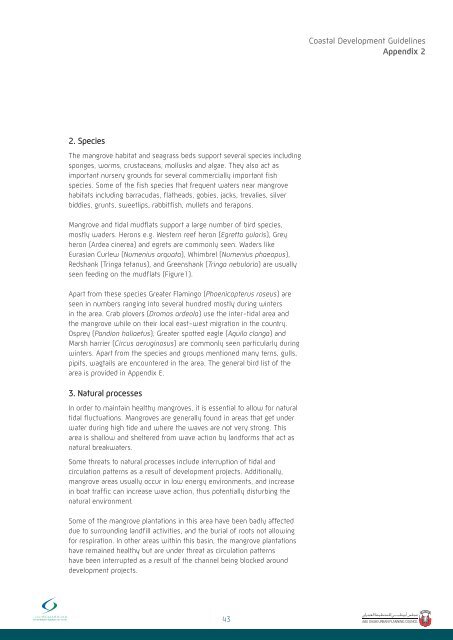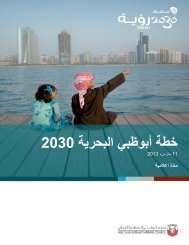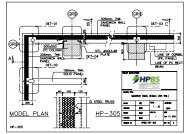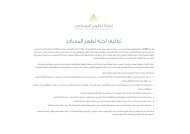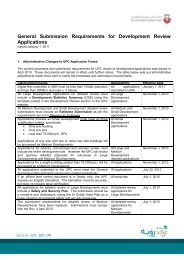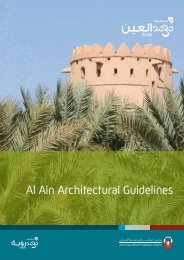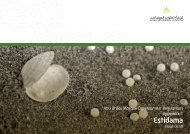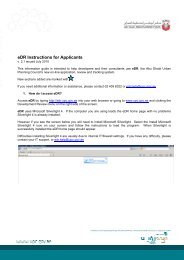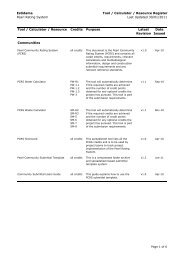Interim Coastal Development Guidelines
Interim Coastal Development Guidelines
Interim Coastal Development Guidelines
Create successful ePaper yourself
Turn your PDF publications into a flip-book with our unique Google optimized e-Paper software.
<strong>Coastal</strong> <strong>Development</strong> <strong>Guidelines</strong><br />
Appendix 2<br />
2. Species<br />
The mangrove habitat and seagrass beds support several species including<br />
sponges, worms, crustaceans, mollusks and algae. They also act as<br />
important nursery grounds for several commercially important fish<br />
species. Some of the fish species that frequent waters near mangrove<br />
habitats including barracudas, flatheads, gobies, jacks, trevalies, silver<br />
biddies, grunts, sweetlips, rabbitfish, mullets and terapons.<br />
Mangrove and tidal mudflats support a large number of bird species,<br />
mostly waders. Herons e.g. Western reef heron (Egretta gularis), Grey<br />
heron (Ardea cinerea) and egrets are commonly seen. Waders like<br />
Eurasian Curlew (Numenius arquata), Whimbrel (Numenius phaeopus),<br />
Redshank (Tringa tetanus), and Greenshank (Tringa nebularia) are usually<br />
seen feeding on the mudflats (Figure1).<br />
Apart from these species Greater Flamingo (Phoenicopterus roseus) are<br />
seen in numbers ranging into several hundred mostly during winters<br />
in the area. Crab plovers (Dromas ardeola) use the inter-tidal area and<br />
the mangrove while on their local east-west migration in the country.<br />
Osprey (Pandion haliaetus), Greater spotted eagle (Aquila clanga) and<br />
Marsh harrier (Circus aeruginosus) are commonly seen particularly during<br />
winters. Apart from the species and groups mentioned many terns, gulls,<br />
pipits, wagtails are encountered in the area. The general bird list of the<br />
area is provided in Appendix E.<br />
3. Natural processes<br />
In order to maintain healthy mangroves, it is essential to allow for natural<br />
tidal fluctuations. Mangroves are generally found in areas that get under<br />
water during high tide and where the waves are not very strong. This<br />
area is shallow and sheltered from wave action by landforms that act as<br />
natural breakwaters.<br />
Some threats to natural processes include interruption of tidal and<br />
circulation patterns as a result of development projects. Additionally,<br />
mangrove areas usually occur in low energy environments, and increase<br />
in boat traffic can increase wave action, thus potentially disturbing the<br />
natural environment.<br />
Some of the mangrove plantations in this area have been badly affected<br />
due to surrounding landfill activities, and the burial of roots not allowing<br />
for respiration. In other areas within this basin, the mangrove plantations<br />
have remained healthy but are under threat as circulation patterns<br />
have been interrupted as a result of the channel being blocked around<br />
development projects.<br />
43


